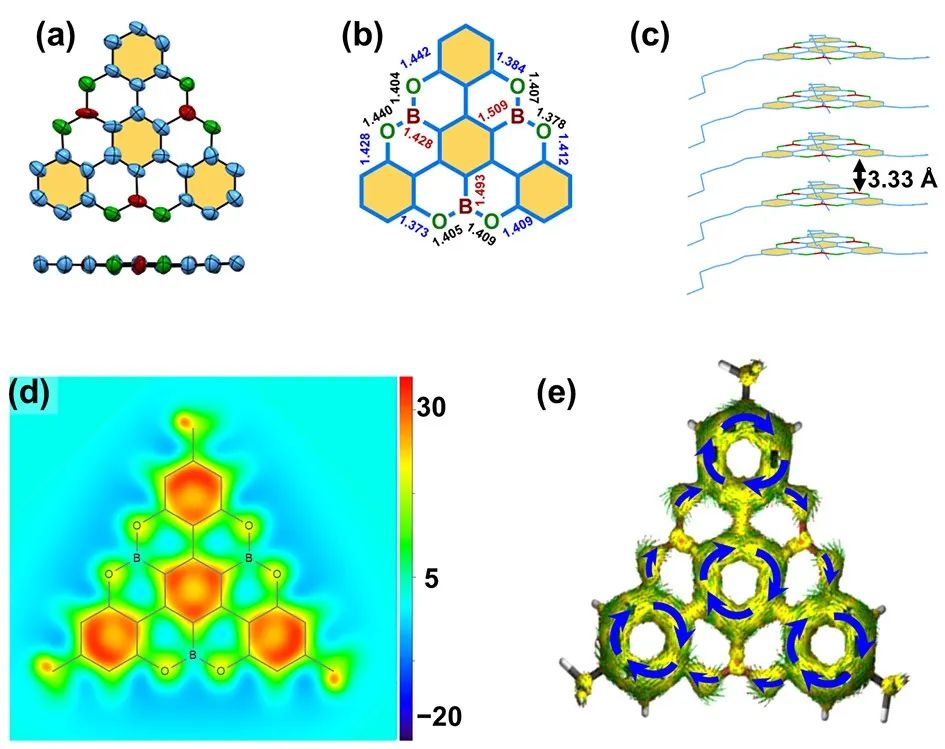Nanographene is considered as a new generation of semiconductor materials because of its potential application value in the fields of photoelectric materials, biological imaging, energy conversion, etc. Nanographene molecules can be accurately synthesized through the "bottom-up" strategy, which can precisely control its photoelectric performance. Triangulanes are a kind of triangular nanographene molecules. Their unique zigzag edge structure endows them with the characteristics of the opening layer, which has important research value in optoelectronic devices and spin electronic devices. However, the inherent high reactivity of free radicals makes it a great challenge to prepare trigones by classical solution synthesis methods.
Recently, Xiaoye Wang’s team synthesized a new [4]heterotriangulene with three oxygen-boron-oxygen (OBO) segments incorporated into the zigzag edges. The planar geometry of the OBO-doped [4]triangulene is demonstrated by single-crystal X-ray diffraction. Self-assembly on metal surfaces reveals substrate-dependent nanostructures, leading to different long-range ordered 2D patterns on Ag and Cu substrates with negligible defects.

Figure. 1 Synthesis of Boroxyza [4] Trigones

Figure. 2 (a – c) 1b single crystal structure, partial bond length and stacking structure; (d, e) Theoretical calculated ICSS(1)zz and ACID diagram